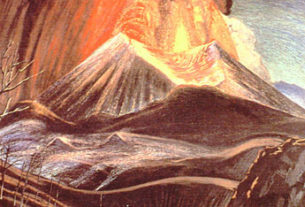The basic recipe is a charred and peeled chile poblano — a chili pepper named poblano for the state of Puebla.
After the chile is peeled, it is opened and the seeds are removed. It is stuffed with any kind of fillings imaginable, ranging from a pork, chicken, or beef picadillo to beans or even seafood. The chile is then closed, using toothpicks, covered with an egg batter and fried to perfection.
To top the chiles, traditionally a tomato based salsa is prepared, but nowadays you can find them covered with different salsas going from the offensively fiery to sweet and sour ones.
Anywhere you go in the country, you will hear the stories of people who claim that their mother, grandmother, aunt or even wife makes the best chile relleno you will ever try in your life. The truth is, chiles rellenos are all good, different in every way, all with different fillings depending on the region of this vast country you find yourself in.
One of the most famous and important to all the country; especially during the month of September when Mexico celebrates its independence from Spain; is the chile en nogada. This culinary delight is a poblano pepper stuffed with a pork and fruit picadillo, covered with a walnut sauce and decorated with pomegranate seeds. This dish dates back to the dictatorship of Porfirio Diaz at the beginning of the XIX century and is said to have been created to celebrate Porfirio’s birthday in the month of September.
One clear thing I can say and almost assure anyone is that whenever you mention the name chiles rellenos in Mexico, most certainly the reply will be “¡Qué rico!” or a lustful expression that states that dish is to the liking of all.
Here’s a recipe for chile relleno filled with cheese and a basic tomato salsa to accompany it. But if you’re feeling creative and get the urge to invent your own version, go ahead and fill it with anything you can think of. Remember, this dish goes well with just about anything!
Choose large, firm chiles that are as smooth as you can find. This makes the charring and peeling steps much easier and the chile cooks more evenly.
Ingredients
For the chiles:
- 4 medium to large size chiles poblanos, washed
- 800 gr to 1 kilo of Oaxaca, adobera or Monterrey jack cheese
- 4 eggs, separated
- 12 small wooden toothpicks
- 100 to 200 grams of flour
- 400 to 600 ml of vegetable oil
For the salsa:
- 6 to 10 tomatoes
- ½ a small onion
- 2 grams of oregano
- 1 gram thyme
- 1 small chile de arbol (omit this if you don’t like much of a bite)
- salt and pepper to taste
For the chiles:
- Wash and dry the chiles. Then char them one by one over an open flame until they are blackened all over. If you have an electric range, you can do this under the broiler. Once the chiles are charred, put them immediately inside a plastic bag and close it so the chiles can blister and sweat. This loosens the skin.
- Once the chiles have sweated and the skin is easy to lift, peel the chiles under running water by gently pulling off the skin.
- Open the chiles and remove all the seeds and veins. (Remember this part has the highest concentration of capsaicin in the chile and bites the most). Stuff the chiles with 200 to 250 grams of cheese and close the chile with the toothpicks.
- With a whisk, incorporate air in the egg whites until they are fluffy. Fold in the yolks and keep whisking. Or you can use an electric mixer to beat the egg whites.
- Roll the chiles in a plate of flour to cover them and then pass them through the beaten egg batter.
- Immediately slide them into a pan of hot oil to fry the batter on the chiles. When the batter is fluffy and golden, let them drain over paper towels.
For the salsa:
- Remove the tomato stems and boil the tomatoes together with the onion.
- On a comal or small griddle, toast the chiles and the herbs.
- Blend all the ingredients in the blender. Strain the salsa into a small saucepan and cook over low heat. Check the flavor and add salt and pepper to taste.
Presentation
Mount a chile on a dinner plate and pour the hot salsa over the chiles.
Makes 4 chiles rellenos.
Published or Updated on: September 25, 2010


Place chiles inside a plastic bag to sweat.









For the salsa





© Daniel Wheeler, 2010

















